Moissanite is a gemstone that closely resembles a diamond in terms of its appearance and brilliance. It is composed of silicon carbide and is known for its exceptional fire and sparkle. Many people consider moissanite as a more affordable alternative to diamonds, especially for engagement rings and other jewelry pieces.
A diamond tester is a device used to determine whether a stone is a diamond or not. It works by measuring the thermal conductivity of the gemstone. Since diamonds have high thermal conductivity, they can dissipate heat quickly. This characteristic sets them apart from other gemstones like moissanite, which has lower thermal conductivity.
Table of Contents
- 1 Does Moissanite Pass the Diamond Tester?
- 1.1 Results of Testing Moissanite with Different Diamond Testers
- 1.2 Factors Affecting Moissanite’s Response to Diamond Testers
- 1.3 Composition and Properties of Moissanite
- 1.4 How Diamond Testers Distinguish Between Diamonds and Other Gemstones
- 1.5 How Experts Differentiate Moissanite from Diamonds
- 1.6 Moissanite as an Alternative to Diamonds
Does Moissanite Pass the Diamond Tester?
Yes. Without a doubt! Moissanite rings are undetectable by a diamond tester. Traditional diamond testers simply measure the thermal conductivity of the gemstone, not its electrical conductivity. This means they will be unable to differentiate between diamonds and moissanites; both of which possess heat-conducting properties.
Results of Testing Moissanite with Different Diamond Testers
When it comes to testing moissanite with diamond testers, the results can vary depending on the type of tester used. Here are the typical results you might expect:
Thermal Conductivity Tester: Moissanite tends to have a similar thermal conductivity to diamonds, which can sometimes lead to false positive results. Some thermal conductivity testers may identify moissanite as a diamond due to its similar heat conductivity.
Electrical Conductivity Tester: Moissanite has a higher electrical conductivity than diamonds, which means that certain electrical conductivity testers may identify it as a diamond. However, some advanced testers can differentiate between moissanite and diamonds based on their electrical conductivity levels.
Ultraviolet (UV) Tester: Moissanite exhibits strong fluorescence under UV light, which can help distinguish it from diamonds. UV testers can be an effective tool to identify moissanite based on its unique fluorescence properties.
It is important to note that while diamond testers can provide some indication, they are not foolproof and may not always provide accurate results. For a definitive answer, it is recommended to consult with a professional gemologist or use advanced testing methods such as spectrometers or multispectral imaging.
Read Also: Are Morganite Engagement Rings Tacky
Factors Affecting Moissanite’s Response to Diamond Testers
While Moissanite can sometimes pass the diamond test, there are several factors that can affect its response to diamond testers:
Quality of the Tester: The accuracy and sensitivity of the diamond tester can vary depending on the brand and model. Some testers may not be able to distinguish between Moissanite and diamonds accurately.
Size of the Moissanite: Smaller Moissanite stones may be more likely to pass the diamond test, as they contain fewer thermal properties that can trigger the tester.
Type of Tester: Different types of diamond testers rely on different principles to determine if a stone is a diamond. Some types of testers may be more accurate in distinguishing between Moissanite and diamonds.
Composition and Properties of Moissanite
Chemical Composition of Moissanite
Moissanite is a naturally occurring silicon carbide mineral that was first discovered by French chemist Henri Moissan in 1893. Its chemical composition is SiC, consisting of silicon and carbon atoms arranged in a crystal lattice structure.
Physical Properties of Moissanite
Moissanite is known for its impressive physical properties, making it an attractive and affordable alternative to diamonds:
Hardness: Moissanite has a hardness rating of 9.25 on the Mohs scale, making it one of the hardest gemstones. This makes it highly resistant to scratching and suitable for everyday wear.
Brilliance: Moissanite has a high refractive index, meaning it has exceptional brilliance and sparkle. Its optical properties allow it to disperse light beautifully, creating a stunning display of color.
3Color: Moissanite is naturally occurring in various colors, ranging from colorless to light yellow or green. However, most gem-quality moissanite is near colorless, similar to a high-quality diamond.
Fire: Moissanite is known for its exceptional fire, which refers to its ability to disperse white light into its spectral colors. This gives moissanite a captivating rainbow effect under certain lighting conditions.
Similarities and Differences between Moissanite and Diamonds
While moissanite and diamonds share some similarities, they also have distinct characteristics that set them apart:
Similarities:
- Both moissanite and diamonds are gemstones that are valued for their beauty and durability.
- Both can be cut and polished into various shapes and sizes.
- Both have a high refractive index, giving them excellent brilliance.
Differences:
- Chemical Composition: Moissanite is composed of silicon carbide, while diamonds are pure carbon.
- Hardness: Moissanite is slightly harder than diamonds on the Mohs scale.
- Brilliance: Moissanite has a higher refractive index than diamonds, giving it more brilliance and fire.
- Price: Moissanite is more affordable than diamonds.
How Diamond Testers Distinguish Between Diamonds and Other Gemstones
Diamond testers are designed to specifically identify diamonds and differentiate them from other gemstones. While these devices can quickly determine whether a gemstone is likely to be a diamond or not, they do have their limitations.
Diamond testers cannot provide definitive identification of a gemstone. They can only provide an indication of the gemstone’s thermal conductivity, which is a characteristic commonly associated with diamonds. Other gemstones, such as moissanite, can yield similar thermal conductivity results, causing diamond testers to give a false positive.
Limitations of Diamond Testers
While diamond testers are a useful tool for preliminary identification, it’s important to note their limitations:
Differentiating Diamond Simulants: Diamond testers may give the same positive results for diamond simulants, like moissanite, as they do for diamonds. Therefore, additional testing methods, such as observation through a magnifying loupe or professional laboratory testing, may be needed for accurate identification.
Testing Mounted Gemstones: Diamond testers may not provide accurate results when testing gemstones that are already mounted in jewelry. The metal prongs or setting can interfere with the heat conductivity of the gemstone, leading to inaccurate readings.
Identification of Fancy Color Diamonds: Diamond testers are primarily designed to identify colorless or near-colorless diamonds. They may not be reliable in distinguishing fancy color diamonds, which have different thermal conductivity properties.
Sensitivity to User Error: Diamond testers require proper handling and interpretation of the results. Incorrect use or misinterpretation can lead to inaccurate conclusions about a gemstone’s identity.
While diamond testers are a convenient and portable tool for initial gemstone identification, they should not be the sole determining factor in identifying diamonds. It is always advisable to consult with a professional gemologist or rely on specialized laboratory testing for a comprehensive and accurate analysis.
How Experts Differentiate Moissanite from Diamonds
While a diamond tester can often differentiate between a diamond and most simulant gemstones, including cubic zirconia, it may not always provide accurate results when it comes to moissanite. Moissanite has a similar electrical conductivity to diamonds, which can lead to false positives on a diamond tester.
To accurately differentiate between moissanite and diamonds, experts rely on a combination of methods, including:
- Visual Inspections: Gemologists carefully examine the stone using magnification tools to assess its optical properties and unique characteristics. Moissanite often exhibits double refraction, whereas diamonds do not.
- Weight and Specific Gravity: Moissanite has a lower specific gravity compared to diamonds, meaning it is less dense. By comparing the weight and specific gravity of a stone, gemologists can gather valuable clues for identification.
- Thermal Conductivity: Diamonds have exceptional thermal conductivity, which means they disperse heat quickly. Gemologists can use thermal conductivity probes to measure the stone’s reaction to heat, helping differentiate between moissanite and diamonds.
- Lab Testing: For conclusive results, gemologists can send the stone to a reputable certification laboratory like the GIA for comprehensive testing and analysis. These laboratories utilize advanced techniques, such as spectroscopy, to accurately identify the stone’s composition.
It’s important to note that while moissanite may pass a diamond tester, it possesses unique properties that distinguish it from diamonds under careful examination. Consulting with a certified gemologist or conducting lab tests can provide a definitive answer when it comes to differentiating between a moissanite and a diamond.
Moissanite as an Alternative to Diamonds
Moissanite is increasingly being recognized as a genuine alternative to diamonds, offering unparalleled brilliance, fire, and durability. Its diamond-like appearance and affordability make it an attractive choice for individuals looking for a stunning gemstone without the high price tag. Moreover, moissanite is a lab-grown gemstone, which means it is not associated with the environmental and ethical concerns often linked to diamond mining. As a result, more individuals are opting for moissanite as a socially responsible and sustainable choice for their jewelry.
Overall, the rise in popularity of moissanite can be attributed to consumer awareness, education, and the desire for more affordable and sustainable options in the jewelry market. As more people discover the beauty and benefits of moissanite, it is becoming a sought-after gemstone for engagement rings, wedding bands, and other types of jewelry.
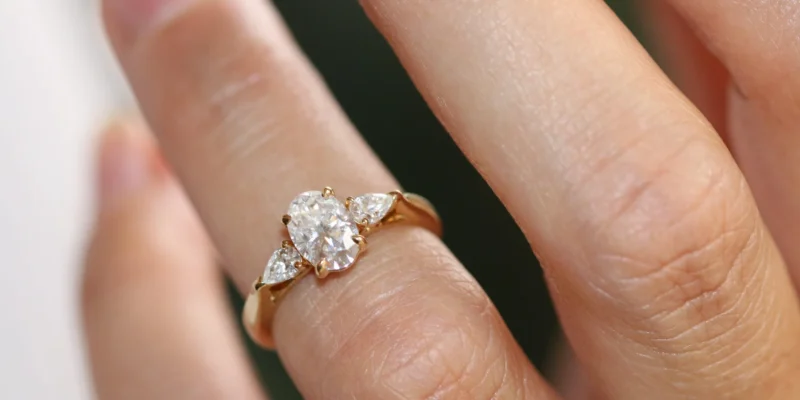
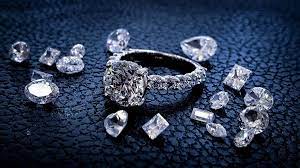
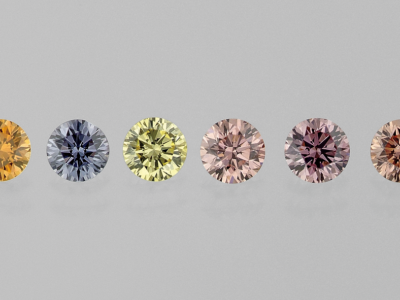
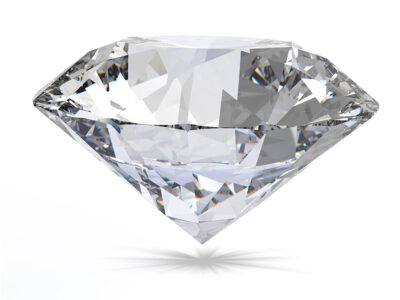

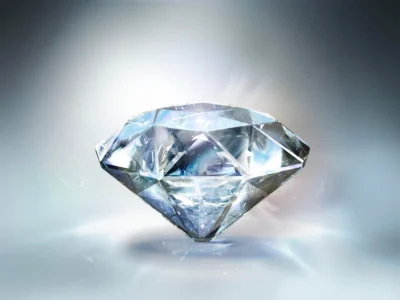
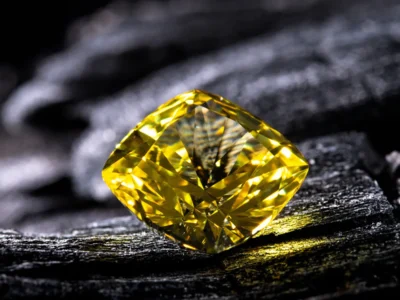
Comments